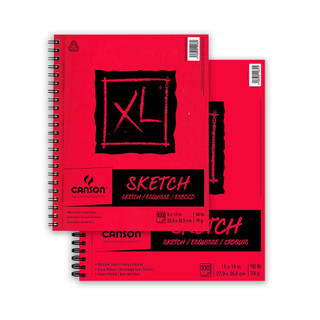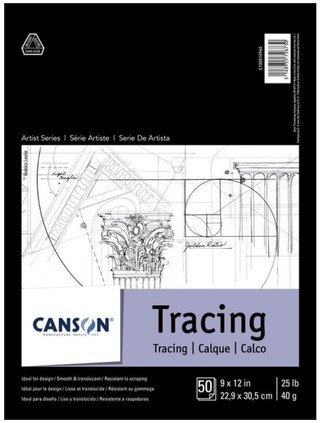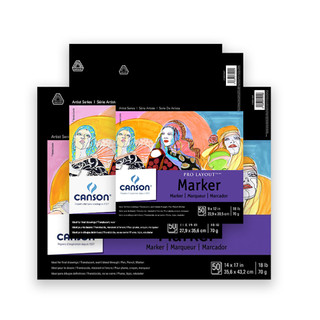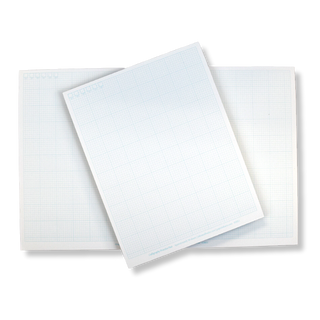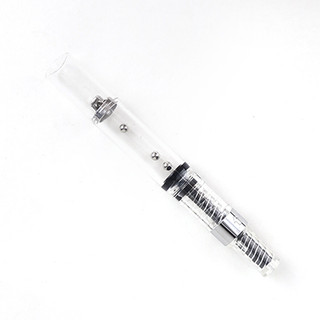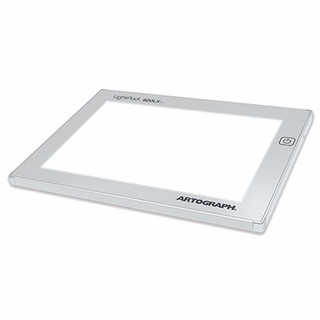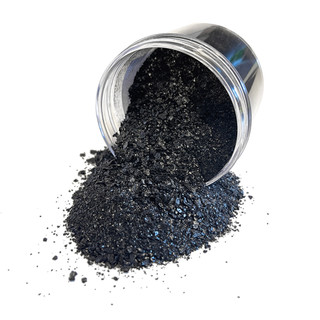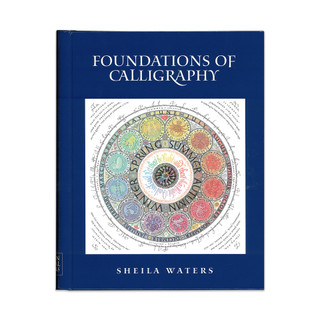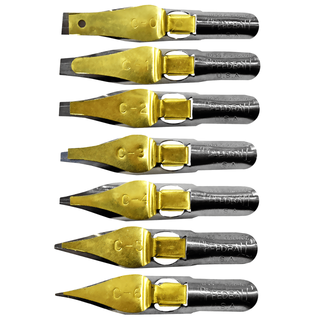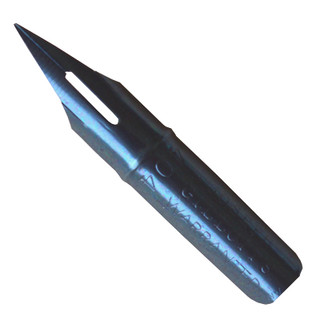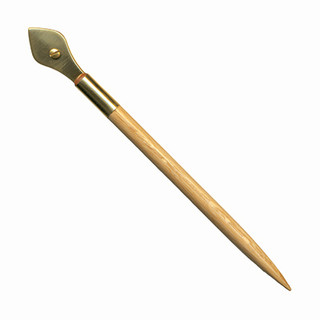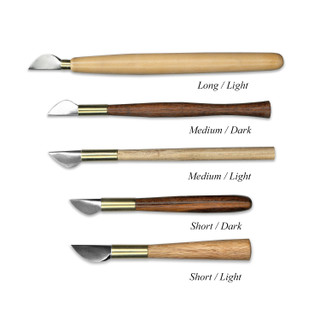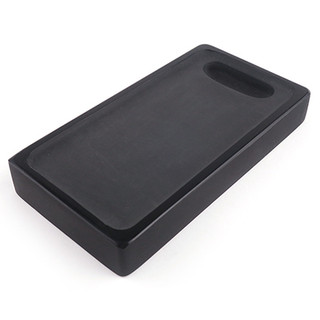Ann Miller - Calligraphy and Letterforms: History, Methods, and Practice - Oct 9-Nov 13
Ann Miller
Calligraphy and Letterforms: History, Methods, and Practice
Live (Also recorded for later viewing)
October 9, 2024-November 13, 2024
7:00-8:50pm (Pacific Time)
Class Cost: $385
All Skill Levels
Registration Contact Email: calligraphy@pennib.com
To Register Visit: https://stanford.io/4fNQ1ZP
LEARN THE BASICS OF HANDLETTERING! Letterform is a blend of structure and movement and its background is immense. This class introduces the practice of calligraphy, providing historical reference and …
Read MoreDescription
LEARN THE BASICS OF HANDLETTERING!
Letterform is a blend of structure and movement and its background is immense. This class introduces the practice of calligraphy, providing historical reference and guiding the student in writing formal scripts with confidence. We begin by learning the structure of the Roman alphabet, formal and expressive stroke techniques using pen and ink, and a time-honored grid system for page layout. An expressive, contemporary approach to freehand writing is covered extensively using pencil, brush, and marker, and focusing on rhythm and proper spacing.
We study four formal scripts in depth: 1) Irish Uncial; 2) Classic upright 15th century Humanist Minuscule, the basis of our print script; 3) Gothic Blackletter Script, noted for its structural system and graphic impact; and 4) Italic, our foundation for fluid cursive writing. Each script learned offers a fresh insight into form and design. Additional scripts are introduced and discussed.
Weekly assignments include alphabet practice, small fun projects, and several more complex design projects. Live demos support the development of technique, design skills, and self-critique. Each session includes time for feedback and discussion. Exercises cover positive/negative relationships of letterforms, visual rhythms, textures and forces, and other aspects of text art and design. By focusing on individual components, we absorb a complex subject without being overwhelmed. Students will have access to examples from my large personal reference library and will be well prepared for further individual studies and workshops. I am present online daily to respond in detail to your posts.
Calligraphy is visual music, meditative and seismic, conveying personal meaning.
This Zoom course is open to students of all skill levels. Students must purchase their own art supplies and can expect to spend an additional $85–$100 on materials.
October 9, 2024-November 13, 2024
7:00-8:50pm Pacific time
Cost: $385
Hosted By: Stanford Continuing Studies
To Register Visit: https://stanford.io/4fNQ1ZP
Questions? calligraphy@pennib.com
REQUIRED SUPPLIES
- Drawing paper – 9 x 12 pad - Canson Sketch (P108) or Strathmore Drawing 400 Smooth (P109)
- Tracing paper – a small pad (P112) or Canson Pro Layout Marker (P32) is a bit less translucent but doesn’t wrinkle.
- Calligraphy Practice Pad - Calligraphy practice pad (graph paper) for pen and ink, gridded 8 squares to the inch; dark grid is preferred but light grid will work. Makes ink practice easier. (P22)
- Pencil – 2 pencils of your choice such as Faber Castell HB or 2H (PL38)
- Speedball monoline nibs B-0 and B-3 – B-0 and B-3 (you’ll need a minimum of one large nib and one a couple of sizes smaller; these come in sets of two and will fit a regular Speedball holder; B-0 and B-1 come together, and B-3 and B-4 are packed together. If you don’t want the B-0 & B-1 pack, you can get the B-1 & B-2 pack instead.) (N16-S6)
- Markers – Tombow Lettering Set, contains all the following items: (M2035-BEG)
- 2 Tombow Dual Brush pens (Black and Light Gray which is like a drop shadow)
- 1 Fudenosuke calligraphy pen
- 1 Mono Twin permanent marker
- 1 Mono drawing pencil
- 1 Mono eraser
- Instruction guide
- Finepoint Marker – Sakura Pigma Micron archival waterproof finepoint marker; single, perhaps a size 02 (0.30mm) or 03 (0.35mm) or the full set
- Pilot Parallel Pen 3.8mm – Pilot Parallel Pen Portable screw top fountain pen style (also, the 6mm nib size is useful for designing in general, and excellent for practicing large Gothic scripts) These well-made and easy-to-clean pens are used in the demos and come in sizes 1.5, 2.4, 3.0, 3.8, 4.5, and 6mm) (FP67, FP67-S4, or FP67-S6)
- Note: you will need to buy a converter* if you want to use your own ink (such as Noodler’s or diluted sumi) in this pen. See next item.
- Pilot Parallel Pen Converter* - Pilot Con-40 to load your own ink into the pen. You'll need one for each pen. (FP124)
- Non-waterproof black ink – (such as Yasutomo Liquid Sumi Ink - 6 oz, water resistant) (I24-6)
- A tube or two of gouache for color work, such as Burnt Sienna or Carmine for warm tone and Ultramarine Blue for a cool hue, or similar warm/cool combination (Holbein or Winsor & Newton) (WNG1, WNG2, WNG3, WNG4) (HG749)
- Basic tool kit from around the house: water bowl, small ink containers, lint-free wipes, xacto blade, scissors, T-square, ruler (cork-backed is good), old toothbrush for cleaning nibs (most students have these on hand; the T-square is important) (S801, S417, S753, S270)
- Standard ruled binder paper, plus copy paper for printouts and informal practice
- Westcott Clear T-Square (S753)
RECOMMENDED
- Lightbox – highly recommended for tracing script models. We will discuss options in class. Options to be discussed in class. (S939) (S1013)
- Drawing Board – For taping paper down and using with T-square for ruling up.
- Aquabee SuperDeluxe Sketchbook – more expensive but great for formal artwork
- Walnut ink – Walnut ink – especially if you enjoy earth tones; lightfast, semi-permanent ink from crystals, just mix with water, not expensive (S449)
- Small Brush – for filling in letters and spaces, maybe a size 1 or 2 or an old brush marker (Pentel or water brush) you can wash and dip into the paint (BR26, BR30, FP93)
- An old watercolor brush for mixing gouache and/or loading ink into pen (BR43)
- A journal book for continuing calligraphy and letterform explorations, a dedicated place to collect words and phrases for personal practice
OPTIONAL
You may want to add one of the following textbooks to your library, though excerpts from each are included in the class:
Foundations of Calligraphy (B27692)
Sheila Waters
John Neal Bookseller (2006)
ISBN 0966530519
Very detailed explanations, lots of reliable and essential info
Calligraphy & Letterform
Christopher Haanes
2022, Matura Press (order from Christopher Haanes)
Excellent introduction to the history, conceptual foundations, with both basic and advanced writing techniques
Calligraphy
Julien Chazal
2013, Stackpole Books
Informal cursive models, light background and history, detailed alphabets with a focus on rhythm and movement; European flavor and loads of hints; all major alphabets including cola pen and pointed pen examples
The Art & Craft of Hand Lettering; Techniques, Projects, Inspiration (B4254)
Annie Cicale
ISBN: 1579908098
Easy to follow letter models with ideas for usage, applied calligraphy, projects.
ADDITIONAL NOTES AND RECOMMENDATIONS
- Nibs: Full set: 14 - Speedball monoline nibs: B-0, B-1, B-2, B-3, B-4, B-5 and B-6, [monoline nibs are the same for both right and left handed scribes] (N16-S6)
and Speedball broad-edged nibs: C-0, C-1, C-2, C-3, C-4, C-5 and C-6 (sometimes one or two of these are hard to find, but do your best) [Left-handed scribes should purchase the available Left-Handed broad-edged nibs here instead]. (N09-S6) - NOTE: Minimum Required nibs:B-0 or B-1 and B-3 or B-4 are recommended for this class, as are the largest C nibs (C-0, C-1, C-2, and C-3). For illustrators and cartoonists please note that B-5, B-5-1/2 and B-6 are superb, with good flow for sketching, and the C-5 is great for all drawing.) You will want to have all the basic nibs eventually.
- Full set of 9 Brause nibs, broad edged: (all 9 available sizes: .5mm, .7mm, 1mm, 1.5mm, 2mm, 2.5mm, 3mm, 4mm, and 5mm) Left-handed scribes should purchase Left-Handed Brause nibs here instead. Brause nibs are precise and are unlikely to catch the paper fibers due to their well-finished edges and firm action. At JNB – Item # N02-S9 right-handed, or Item # N06-S9 left-handed
- Several (3 or more) Pen holders, (H62) Caran d'Ache brand is also good (you can get more holders if you don't want to switch nibs a lot, or fewer if your budget is tight.) Pen holders are also made in ergonomic forms for more ease of use; check JNB. (H32) (H111-S)
- 2 or more pointed-pen nibsfor Pointed Pen work: Gillott 303 or 404, or alternate pointed pen nibs: Leonardt Principal EF nib, Zebra G Nib, Zig G Manga nib or Steno (Blue Pumpkin) (N72) (N74) (N120) (N118) (N90)
ADDITIONAL RECOMMENDED SUPPLIES
- Fiberboard portfolio for protecting your projects (18 x 24' min. dimension; you can make this from leftover archival matboard)
- 18 x 24'' Aerocore Drawing Board or reasonable substitute (you may also work flat, but it can put a strain on the neck) These have become expensive. Look around for best buy, depending on your usage.
- A small bag of gum sandarac to help keep pen lines crisp. (S123)
- A Crow Quill Nib (optional, but only IF you buy the Gillott 303 or 404 nibs instead) However, if you like tiny writing, small detail, and enjoy precise form and edge, these pens are amazing. They are also excellent for touching up rough edges and refining letter forms. (N79) (N85) (N126) (H67) (H89)
- A Crow Quill Holder (not needed if you use the Gillott 303 or 404 which fits the standard holder)
- A Ruling Pen – Choose from many on JNB website. I use them all, especially N22, N148, and N155 (Luthis Folded Pens) My favorite is Brody Neuenschwander’s new pen N211. See a video on using Brody’s Handwritmic ruling pen here.
- Walnut ink – if you like the warm brownish color, you can use this in your assignments. 1 oz Walnut Ink Crystals (S449)
- Ink Stick - Black sumi Kenbimukan Ink Stick. (IS03) Use this wherever you would use bottled ink. It takes a bit of time to grind enough for large projects but is a great way of working.
- Ink Stone - (IS19, IS40)
- 3-ring binder (minimum 2-inch rings) for containing all printouts and reference materials from this class organized in one place for the future


